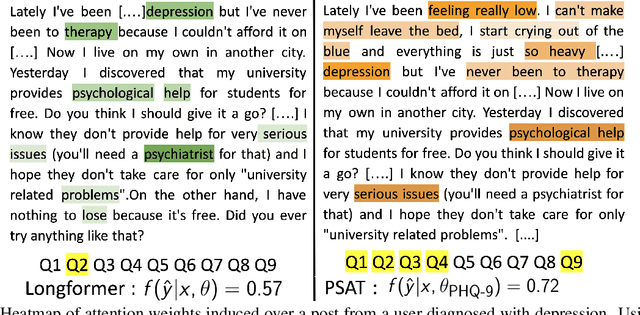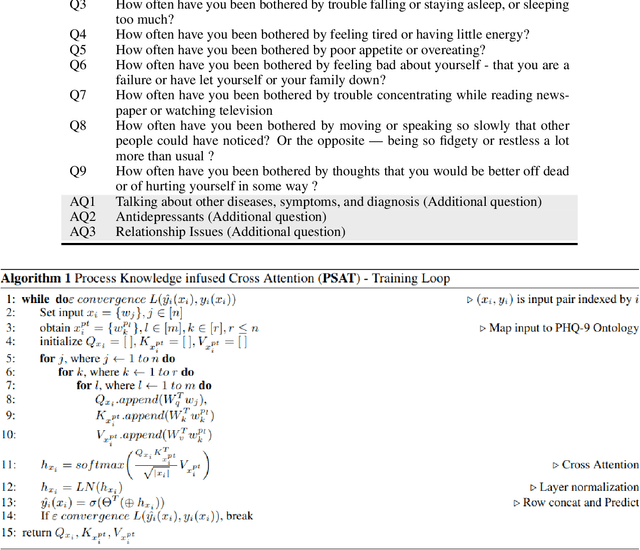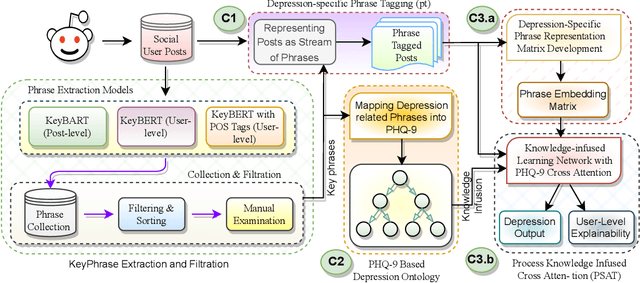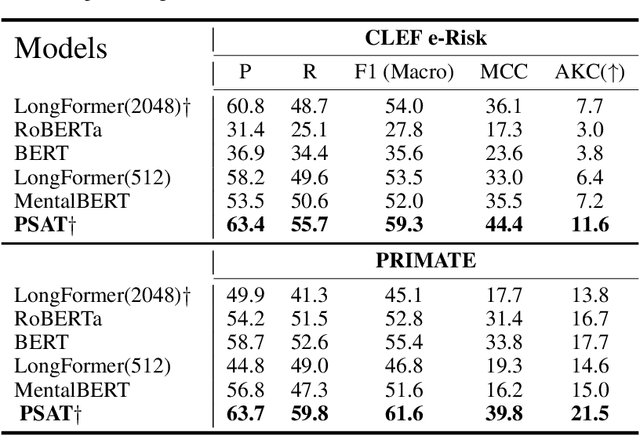Sumit Dalal
Deep Knowledge-Infusion For Explainable Depression Detection
Sep 01, 2024Abstract:Discovering individuals depression on social media has become increasingly important. Researchers employed ML/DL or lexicon-based methods for automated depression detection. Lexicon based methods, explainable and easy to implement, match words from user posts in a depression dictionary without considering contexts. While the DL models can leverage contextual information, their black-box nature limits their adoption in the domain. Though surrogate models like LIME and SHAP can produce explanations for DL models, the explanations are suitable for the developer and of limited use to the end user. We propose a Knolwedge-infused Neural Network (KiNN) incorporating domain-specific knowledge from DepressionFeature ontology (DFO) in a neural network to endow the model with user-level explainability regarding concepts and processes the clinician understands. Further, commonsense knowledge from the Commonsense Transformer (COMET) trained on ATOMIC is also infused to consider the generic emotional aspects of user posts in depression detection. The model is evaluated on three expertly curated datasets related to depression. We observed the model to have a statistically significant (p<0.1) boost in performance over the best domain-specific model, MentalBERT, across CLEF e-Risk (25% MCC increase, 12% F1 increase). A similar trend is observed across the PRIMATE dataset, where the proposed model performed better than MentalBERT (2.5% MCC increase, 19% F1 increase). The observations confirm the generated explanations to be informative for MHPs compared to post hoc model explanations. Results demonstrated that the user-level explainability of KiNN also surpasses the performance of baseline models and can provide explanations where other baselines fall short. Infusing the domain and commonsense knowledge in KiNN enhances the ability of models like GPT-3.5 to generate application-relevant explanations.
A Cross Attention Approach to Diagnostic Explainability using Clinical Practice Guidelines for Depression
Nov 23, 2023



Abstract:The lack of explainability using relevant clinical knowledge hinders the adoption of Artificial Intelligence-powered analysis of unstructured clinical dialogue. A wealth of relevant, untapped Mental Health (MH) data is available in online communities, providing the opportunity to address the explainability problem with substantial potential impact as a screening tool for both online and offline applications. We develop a method to enhance attention in popular transformer models and generate clinician-understandable explanations for classification by incorporating external clinical knowledge. Inspired by how clinicians rely on their expertise when interacting with patients, we leverage relevant clinical knowledge to model patient inputs, providing meaningful explanations for classification. This will save manual review time and engender trust. We develop such a system in the context of MH using clinical practice guidelines (CPG) for diagnosing depression, a mental health disorder of global concern. We propose an application-specific language model called ProcesS knowledge-infused cross ATtention (PSAT), which incorporates CPGs when computing attention. Through rigorous evaluation on three expert-curated datasets related to depression, we demonstrate application-relevant explainability of PSAT. PSAT also surpasses the performance of nine baseline models and can provide explanations where other baselines fall short. We transform a CPG resource focused on depression, such as the Patient Health Questionnaire (e.g. PHQ-9) and related questions, into a machine-readable ontology using SNOMED-CT. With this resource, PSAT enhances the ability of models like GPT-3.5 to generate application-relevant explanations.
 Add to Chrome
Add to Chrome Add to Firefox
Add to Firefox Add to Edge
Add to Edge